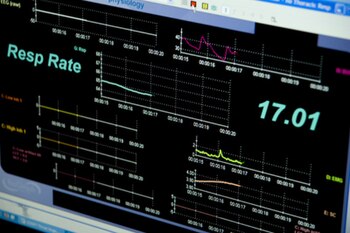 |
| (Photo credit: Wikipedia) |
According to medical research, Asthma is an allergic inflammation of the lungs. Moreover, an asthma attack can be triggered by chemicals, air pollutants, pollens, molds, dust, animal dander, foods, exercise, and even temperature changes.
However, friends, speaking from my experiences with asthma from the age of 7 till I was about 20, the one factor I think is the most influential negatively on one’s respiratory and overall health, will be what one consumes.
This is a fact that has been in effect in several programs aimed at correcting respiratory health such as the "Breath Retaining Program for Asthmatics" developed by the Russian, Dr. Buteyko. Within weeks of adhering to his advice, many a chronic asthmatic has been able to give up the use of Ventolin inhalers.
Now, I never had to use his program; however, in my quest to get rid of acne, I stumbled on the dietetic change that miraculously cured my asthma, halitosis and overall lethargy. Being amazed at how this change in eating habits worked for not one, but all of my health challenges, was what made me research and discover that such a program as his even exists.
“Well, what is the dietetic suggestion?” one might ask. Quite simply, it is to give up all processed foods and animal products such as meat, milk, eggs and the like from your diet-plain and simple.
Two quotes come to mind in advocating this: “You are what you consume” and “Let your foods be your medicine and your medicine your foods”
Now, I ask you a question: “What is the main physical emission that occurs during an asthma attack with all the wheezing and coughs?” It is mucus.
All the foods listed above are highly mucus forming and upon digestion (if they ever do get digested that is), they leave one with an excessive lining of mucus and slime. Keep in mind that the lungs are the most important excretory organs when you add its functioning to this fact, it becomes apparent that the consumption of these substances is really only wreaking havoc on the body.
In addition, from my own experience, DO NOT CONSUME LIQUIDS WITH YOUR MEALS AT ANY TIME. This inhibits digestion by diluting the necessary juices in your stomach designated for that purpose. As a result, it hinders the much-needed expansion of the diaphragm and consequently a constriction of the lungs- the bellows of life-giving air- which results in the wheezing sounds any asthma patient is familiar with.
So what should one eat as an asthma patient?
Well, the foods that are the exact opposite, mucus binding or non-mucus forming foods.
These are quite simply fruits and vegetables. Make sure they are organic if possible or at least not in the list of the “dirty dozen” i.e. the ones most contaminated with pesticides such as Apples, Mexican Melons, Grapes etc…
Trust me on this; I’m speaking from experience, you will do very well to avoid the fruits in that list when it comes to asthma. Nonetheless, you’d still be much better off steering clear of those food substances labeled as mucus-forming earlier on.
Other minor factors will still come into play in regards to a natural asthma treatment, however, diet is arguably THE factor to monitor the most.
Remember what you eat affects how you breathe…and how you breathe affects how you live.
Here’s to breathing freer.


